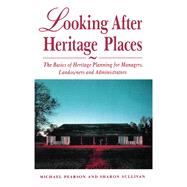|
xi | (2) | |||
| Acknowledgements | xiii | ||||
|
1 | (33) | |||
|
1 | (3) | |||
|
4 | (3) | |||
|
7 | (4) | |||
|
11 | (5) | |||
|
16 | (17) | |||
|
17 | (1) | |||
|
18 | (2) | |||
|
20 | (1) | |||
|
21 | (1) | |||
|
22 | (11) | |||
|
33 | (1) | |||
|
34 | (48) | |||
|
35 | (1) | |||
|
36 | (1) | |||
|
37 | (1) | |||
|
37 | (2) | |||
|
37 | (1) | |||
|
38 | (1) | |||
|
38 | (1) | |||
|
39 | (1) | |||
|
39 | (5) | |||
|
44 | (12) | |||
|
48 | (2) | |||
|
50 | (5) | |||
|
55 | (1) | |||
|
56 | (20) | |||
|
56 | (1) | |||
|
57 | (4) | |||
|
61 | (2) | |||
|
63 | (2) | |||
|
65 | (2) | |||
|
67 | (2) | |||
|
69 | (4) | |||
|
73 | (3) | |||
|
76 | (2) | |||
|
78 | (2) | |||
|
80 | (1) | |||
|
80 | (2) | |||
|
82 | (44) | |||
|
86 | (2) | |||
|
88 | (2) | |||
|
90 | (6) | |||
|
90 | (2) | |||
|
92 | (2) | |||
|
94 | (2) | |||
|
96 | (1) | |||
|
96 | (1) | |||
|
97 | (6) | |||
|
103 | (3) | |||
|
106 | (1) | |||
|
106 | (1) | |||
|
107 | (1) | |||
|
108 | (18) | |||
|
108 | (1) | |||
|
109 | (1) | |||
|
110 | (4) | |||
|
114 | (2) | |||
|
116 | (1) | |||
|
117 | (1) | |||
|
118 | (1) | |||
|
118 | (8) | |||
|
126 | (61) | |||
|
127 | (5) | |||
|
132 | (1) | |||
|
133 | (38) | |||
|
134 | (4) | |||
|
138 | (1) | |||
|
139 | (8) | |||
|
147 | (6) | |||
|
153 | (15) | |||
|
168 | (3) | |||
|
171 | (11) | |||
|
172 | (2) | |||
|
174 | (1) | |||
|
175 | (3) | |||
|
178 | (4) | |||
|
182 | (5) | |||
|
187 | (33) | |||
|
187 | (11) | |||
|
187 | (3) | |||
|
190 | (3) | |||
|
193 | (5) | |||
|
198 | (13) | |||
|
198 | (1) | |||
|
199 | (1) | |||
|
200 | (2) | |||
|
202 | (7) | |||
|
209 | (1) | |||
|
210 | (1) | |||
|
211 | (2) | |||
|
213 | (1) | |||
|
213 | (7) | |||
|
220 | (57) | |||
|
220 | (2) | |||
|
222 | (8) | |||
|
222 | (1) | |||
|
223 | (2) | |||
|
225 | (5) | |||
|
230 | (9) | |||
|
233 | (2) | |||
|
235 | (1) | |||
|
236 | (2) | |||
|
238 | (1) | |||
|
239 | (25) | |||
|
239 | (1) | |||
|
240 | (1) | |||
|
241 | (4) | |||
|
245 | (1) | |||
|
246 | (18) | |||
|
264 | (10) | |||
|
268 | (2) | |||
|
270 | (2) | |||
|
272 | (2) | |||
|
274 | (3) | |||
|
277 | (30) | |||
|
277 | (2) | |||
|
279 | (2) | |||
|
281 | (3) | |||
|
282 | (2) | |||
|
284 | (2) | |||
|
286 | (1) | |||
|
287 | (1) | |||
|
288 | (1) | |||
|
289 | (2) | |||
|
291 | (2) | |||
|
293 | (1) | |||
|
294 | (1) | |||
|
295 | (1) | |||
|
296 | (1) | |||
|
297 | (3) | |||
|
300 | (1) | |||
|
300 | (1) | |||
|
301 | (2) | |||
|
303 | (4) | |||
|
303 | (1) | |||
|
304 | (1) | |||
|
305 | (2) | |||
|
307 | (13) | |||
|
308 | (3) | |||
|
311 | (1) | |||
|
312 | (2) | |||
|
314 | (1) | |||
|
315 | (2) | |||
|
317 | (1) | |||
|
317 | (3) | |||
| Appendix 1 The Burra Charter | 320 | (4) | |||
| Appendix 2 Code of Ethics of the Australian Archaeological Association | 324 | (2) | |||
| Appendix 3 Thematic List | 326 | (7) | |||
| Appendix 4 Heritage Study Model Brief | 333 | (8) | |||
| Appendix 5 Useful Contacts | 341 | (5) | |||
| Notes | 346 | (12) | |||
| Bibliography | 358 | (17) | |||
| Index | 375 |









